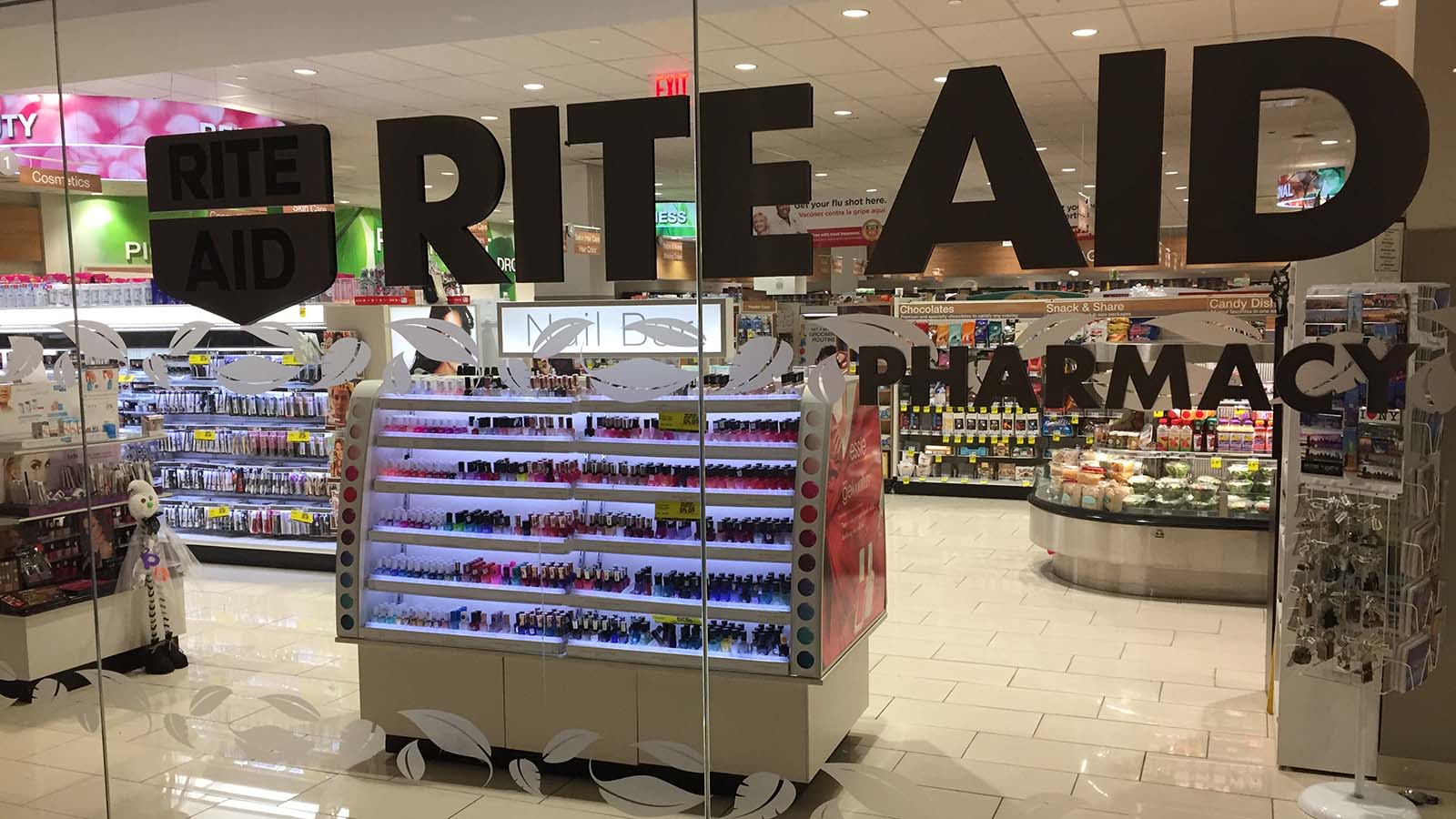After last month’s epic rally, Rite Aid (NYSE:RAD) stock was too hot to touch. However, with investors taking profits, shares fallen back from their 52-week high of $23.88 to its current price of $12.21. With this month’s dip, is now the time to buy RAD stock?

December’s earnings surprise sprung life into the beleaguered pharmacy chain’s shares. Short sellers hastily covered their positions, fueling the massive spike. But now, it’s all up to Rite Aid’s performance long-term to send RAD stock to higher levels.
Whether Rite Aid stock remains a great opportunity boils down to three questions. Firstly, can the company materially improve its operations this year? Secondly, does the underlying business support the stock’s current valuation? Lastly, is Rite Aid still a takeover target, whether from Amazon (NASDAQ:AMZN) or another strategic acquirer?
Digging into these questions, it’s tough to justify RAD stock as a buy. While my prior bearish call on Rite Aid was a bit too early (to say the least), Rite Aid stock at the current price level remains a sell.
Another RAD Stock Rally Depends on Improved Profitability
For decades, Rite Aid has fallen far behind its pharmacy chain rivals CVS Health (NYSE:CVS) and Walgreens Boots Alliance (NASDAQ:WBA). CVS Health has morphed into more of a healthcare company, via its mergers with Caremark and Aetna. Walgreens Boot Alliance owns pharmacy chains globally, and even bought many of Rite Aid’s prime locations after a failed merger deal.
To really move the needle for RAD stock, the company needs to materially improve its profitability. Last quarter’s $51.5 million in net income was a surprise for investors. However, dig into the company’s quarterly filings. A one-time $55.7 million “gain on debt retirements” was what made Rite Aid profitable in the quarter.
That’s not to say Rite Aid is unprofitable on an operating basis. Using the EBITDA metric, Rite Aid generated $158.1 million in EBITDA for the quarter ending Nov. 30, 2019, versus $142.8 million for the quarter ending Dec. 31, 2018.
For the trailing twelve months, Rite Aid’s EBITDA is $515.8 million. But quarterly guidance for fiscal year 2020 does not call for this metric to vastly improve. FY2020 (year ending March 2020) calls for EBITDA between $515 million and $545 million. However, results could improve further by FY2021.
As InvestorPlace’s David Moadel discussed Jan. 14, Rite Aid’s focus on the Medicare Part D market could help drive revenues. Add in continued cost controls, and RAD stock could again take off — even if the company’s EBITDA multiple contracts.
Valuation-Wise, Rite Aid Remains a Double-Edged Sword
When you factor in both long-term debt and lease liabilities, Rite Aid has an enterprise value (EV) of around $7.2 billion (against a $668.8 million market capitalization). In other words, on an EV/EBITDA basis, RAD stock trades at a ratio of about 14.
At this multiple, Rite Aid trades on par with Walgreens (EV/EBITDA of 14), and well-above CVS’s valuation (EV/EBITDA of 11.2). But Walgreens is a much stronger business, with lower levels of leverage than Rite Aid. Net debt and lease liabilities make up a large share of Rite Aid’s capitalization.
Furthermore, Rite Aid’s leverage functions like a double-edged sword. Let’s say Rite Aid brought up EBITDA to $600 million. Even if their EBITDA multiple fell to 12.5, the company would be worth around $18.03 per share. Conversely, let’s say Rite Aid is unable to move EBITDA above FY2020 guidance of $545 million. Apply the same EBITDA multiple, and the valuation of RAD stock falls to about $5.24 per share.
Additionally, how about Rite Aid’s chances as a takeover target? Antitrust hurdles stumped Walgreens’ planned takeover. A shareholder revolt ended an attempted merger with Albertsons. Yet, RAD stock may still be in play.
For years, people have talked up Amazon acquiring Rite Aid in order to obtain its retail presence. Is this realistic? I say no, as there are many good reasons why Amazon won’t buy Rite Aid. However, the odds could be in favor of an Albertsons-type deal (merger with private-equity backed chain), instead of a cash acquisition from a deep-pocketed acquirer.
RAD Stock Isn’t That Much of a Value Play
Overall, RAD stock does not offer great risk/return setup. Slight operating improvement could the stock back to around $18.03 per share. Conversely, if operating performance takes a slight hit, valuation could fall as low as $5.24 per share. As I said before, Rite Aid’s highly-leveraged balance sheet is a double-edged sword.
Nevertheless, RAD stock is tough to bet against. In all, 27.5% of Rite Aid’s float remains sold short. If the next quarterly earnings call indicates a turnaround is still in motion, another short-squeeze driven rally could happen.
But long-term, RAD stock faces headwinds as an independent company. Merging with a larger chain remains their best bet — but outside of this possibility, Rite Aid shares remain a sell at the current price levels.
As of this writing, Thomas Niel did not hold a position in any of the aforementioned securities.
